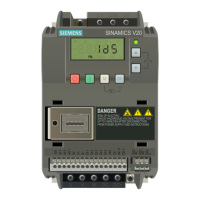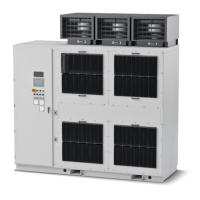Basic functions
7.20 Tolerant encoder monitoring
Drive functions
Function Manual, 11/2017, 6SL3097-4AB00-0BP5
379
Signal edge evaluation (1x, 4x)
The "signal edge evaluation" function allows square-wave encoders with higher production
tolerances or older encoders to be used. Using this function, a "steadier" actual speed value
is calculated for encoders with an uneven pulse duty factor of the encoder signals. As a
consequence, you can keep the old motors together with the encoders - for example when
modernizing plants.
1. Sets parameters p0437 bit 4 and bit 5 as follows to activate "signal edge evaluation":
0 1 Reserved
1 1 Reserved
1. For the 4x evaluation, both the rising and falling edges of a contiguous pulse pair on the A
and B tracks are evaluated.
2. For the 1x evaluation, only the first or the last edge of a contiguous pulse pair on the A
and B tracks are evaluated.
3. A 4x evaluation of the pulse encoder signals allows a minimum speed to be detected
which is a factor of 4 lower than for the 1x evaluation. For incremental encoders with
uneven pulse duty factor of the encoder signals or where the encoder signals are not
precisely offset by 90°, a 4x evaluation can result in an actual speed value that is
somewhat less steady.
4. The following formula defines the lowest speed where a distinction can be made to 0:
n_min = 60 / (x*p0408) [rpm]
with x = 1 or 4 (x times evaluation)
Note
You can only use the reduction to 1x evaluation in conjunction w
ith the edge zero mark or
without zero mark. Detection with an accuracy of one pulse is no longer possible for zero
marks with "unambiguous range" or distance
-coded zero marks.

